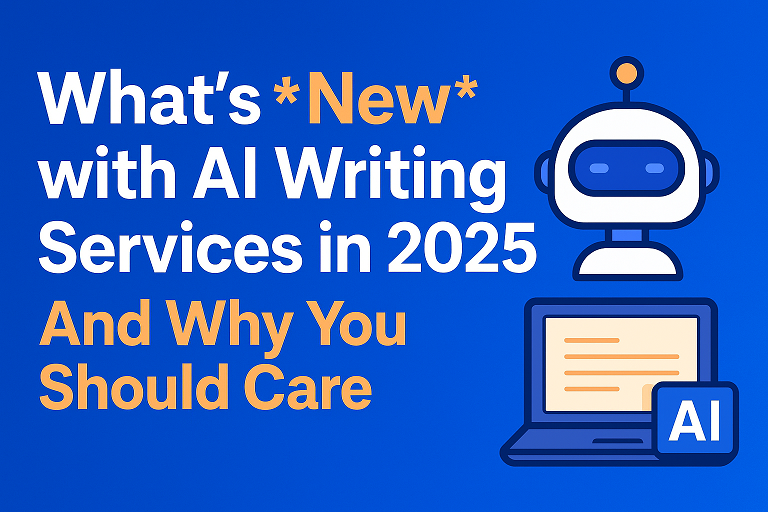Learning New Languages Using AI: Revolutionizing the Way We Communicate
Language learning has always been a gateway to new cultures, experiences, and opportunities. However, mastering a new language is often daunting, requiring time, patience, and consistent practice. In recent years, Artificial Intelligence (AI) has emerged as a transformative force, offering innovative tools and techniques to make language acquisition more accessible, efficient, and engaging.
In this comprehensive guide, we delve into how Learning New Languages Using AI is revolutionizing the language learning landscape, explore the best AI-driven tools available today, and provide actionable tips to harness these technologies effectively.
The Role of AI in Language Learning
AI technologies leverage natural language processing (NLP), machine learning, and adaptive algorithms to create personalized and interactive learning experiences. Here’s how AI is changing the game:
1. Personalized Learning Paths
AI-powered platforms analyze learners’ progress, strengths, and weaknesses to create customized learning plans. For instance, if a user struggles with verb conjugations but excels in vocabulary, the system adapts to emphasize the challenging areas.
2. Real-Time Feedback
Traditional methods often lack immediate corrective feedback. AI tools, such as speech recognition and writing analysis software, provide instant insights, helping learners improve pronunciation, grammar, and fluency.
3. Immersive Experiences
AI integrates augmented reality (AR) and virtual reality (VR) to simulate real-world scenarios. These immersive environments allow users to practice conversations, understand cultural nuances, and build confidence in a risk-free setting.
4. Scalability and Accessibility
AI makes quality education accessible to millions by breaking down barriers of cost, location, and time. Language learners can access resources anytime and anywhere, using smartphones, tablets, or computers.
Best AI-Powered Tools for Language Learning
The market is brimming with AI-driven tools designed to cater to diverse learning needs. Below are some of the most effective ones:
1. Duolingo
Duolingo has redefined gamified learning. Its AI algorithms adapt lessons based on user performance, ensuring a balance between challenge and progress. The app also incorporates interactive stories and voice recognition exercises for comprehensive practice. Source
2. Rosetta Stone
Renowned for its immersive methodology, Rosetta Stone utilizes AI to perfect pronunciation through its TruAccent technology. The app encourages learners to think and respond in their target language without relying on translations. Source
3. Busuu
Busuu combines AI with a social learning approach. Its personalized study plans and grammar exercises are supplemented by feedback from native speakers in the platform’s community. Source
4. HelloTalk
HelloTalk focuses on conversational practice by connecting learners with native speakers worldwide. AI features, such as text correction and translation, facilitate seamless communication and understanding. Source
5. Google Translate
While primarily a translation tool, Google Translate’s AI-driven improvements enable instant voice, text, and image translations. It’s a handy companion for travelers and language enthusiasts alike. Source
6. LingQ
LingQ uses AI to curate content like articles, podcasts, and videos in various languages. Learners can interact with this material by highlighting new words and tracking their vocabulary growth. Source
7. ChatGPT
OpenAI’s ChatGPT allows learners to engage in free-form conversations. Acting as both a tutor and conversational partner, it helps users practice and learn in a natural dialogue format. Source
Advantages of AI in Language Learning
The benefits of AI-driven language tools extend beyond convenience:
Enhanced Engagement
Interactive exercises, gamified content, and real-world scenarios make learning enjoyable and motivating.
Tailored Pacing
Learners progress at their own speed, reducing frustration and ensuring better retention of knowledge.
Cost-Effectiveness
AI platforms often offer free or affordable subscription models, democratizing access to high-quality language education.
Real-World Application
AI tools mimic real-life interactions, preparing learners for actual conversations and cultural exchanges.
Challenges and Ethical Considerations
Despite its potential, AI in language learning comes with challenges:
Accuracy and Bias
AI models rely on data. Inaccurate or biased datasets can lead to incorrect translations, culturally insensitive suggestions, or poor recommendations.
Lack of Human Connection
While AI excels at simulating conversations, it cannot fully replicate the nuanced feedback and emotional support provided by human instructors.
Data Privacy
As with any digital tool, ensuring user data protection and privacy is paramount.
Tips for Effective AI-Assisted Language Learning
To maximize the benefits of AI tools, keep the following tips in mind:
Set Clear Goals
Define your objectives—whether it’s conversational fluency, passing a language exam, or traveling confidently.
Combine Tools
Use a mix of AI apps and traditional methods to cover all aspects of language learning.
Practice Consistently
Consistency is key. Dedicate time daily or weekly to practice and review.
Seek Human Interaction
Complement AI learning with real-world practice through language meetups, online communities, or native speakers.
Embrace Mistakes
Use AI’s real-time feedback to learn from errors rather than fearing them.
Future of AI in Language Learning
The future promises even more exciting possibilities for AI in language education:
- Emotion Recognition: AI will gauge users’ emotions to adapt lessons dynamically.
- Deeper Immersion: Advancements in AR/VR will make cultural and conversational simulations more lifelike.
- Multilingual AI Tutors: AI models will offer seamless support across multiple languages, breaking down linguistic barriers entirely.
Conclusion
AI is revolutionizing how we learn languages, turning a traditionally challenging process into an accessible, enjoyable, and highly effective journey. By leveraging AI-powered tools and maintaining consistent practice, anyone can unlock the doors to multilingualism and the vast opportunities it brings.
Whether you’re a beginner embarking on your first language or an advanced learner refining your skills, AI stands ready as a powerful ally. Start today and transform your language learning experience!
Footnotes
- Duolingo – https://www.duolingo.com
- Rosetta Stone – https://www.rosettastone.com
- Busuu – https://www.busuu.com
- HelloTalk – https://www.hellotalk.com
- Google Translate – https://translate.google.com
- LingQ – https://www.lingq.com
- ChatGPT – https://openai.com/chatgpt




